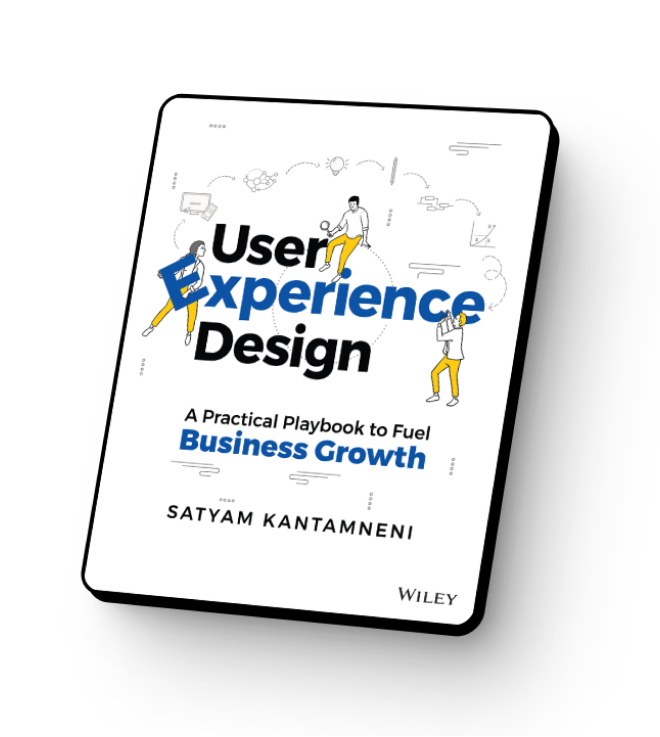Scaling Your Impact: A Guide to Growing Influence as a User Researcher
Most researchers, designers, and product managers want to make an impact, grow their influence, and find job satisfaction in doing so. Believable? I say so. 🙂
Based on these survey results, we know that user researchers commonly struggle with these challenges:
- Consistently including research within the product development lifecycle (64%)
- Sourcing the right participants for research (50%)
- Securing resources or budgets (49%)
- Executive buy-in for UX research (49%)
These challenges won’t be surprising to most user researchers and UX leaders.
To solve these challenges, it requires researchers to explicitly influence decision-makers and be able to make any impact. However, this is easier said than done when UX Research is seldom seen as a strategic driver.
So, what should user researchers and UX leaders do? After 23 years of experimenting with different approaches, below are my recommendations to scale your impact, grow your influence, and solve these challenges.
Build Credibility
The value of individual user researchers, research leaders, and the entire research department is tied to their perceived credibility.
Credibility starts with conducting high-quality research and delivering actionable insights. Every research opportunity, even if it’s just design validation or usability testing, will reveal several hidden insights that the larger team can find valuable.
You also need to demonstrate domain expertise to increase your credibility. Keep up with industry trends, the competitive landscape, and more. This knowledge will help you make your research insights even more valuable and actionable.
Share these success stories repeatedly. Find innovative ways to share findings in reports, video logs, infographics, and more.
Forge Strong Relationships
Regularly engage with multiple departments and reach out across the organization. You might find great allies across the organization, not just within Product, Design, or Research.
Perhaps your HR department wants to be more employee-centric but doesn’t know about User Experience Design and Research.
Or reach out to Marketing to understand their campaigns and goals; you might find UX allies there. They might have a need to validate the value proposition, gauge the effectiveness of a campaign, study why some campaigns generate more leads than others, test marketing websites, and more.
Engage with Engineering counterparts. Generally, they are very interested in larger research report readouts. Throughout my career, I have had great success in getting engineering leaders to be observers of moderated studies.
The point is to build a broader circle of individuals who know what you do, how, and why. But tailor your communication to each department and individual you speak with. Seek to understand and not just be understood–ask, “What’s in it for them?” Then tailor your message accordingly.
Become a Master Storyteller
User insights and stories cannot die in PowerPoint, Google Drive, or SharePoint. If you have amazing examples and details of users’ experiences with your product, and they’re in a deck somewhere, assume no one knows about it.
It’s your responsibility, I might say duty, to keep narrating stories: “A year ago, when we were researching X, we found Y”.
Do this over and over again, with the same level of excitement. It’s part of the job. Make these stories relatable but also referenceable from past reports.
Facilitate Workshops
Be the person who rapidly jumps into a situation and facilitates a hands-on workshop using tools like sticky notes, Miro, FigJam, or Zoom.
Good Researchers and Designers are system thinkers who understand the users. We are uniquely positioned to bring the larger organization together to brainstorm solutions and then facilitate converging those ideas into concrete visual prototypes.
When the wider organization sees you in action, guess what? Next time, they’re going to ask you to join strategic conversations and help facilitate workshops.
Speak the Business Language – Always
If you only narrate users’ stories without connecting them to product decisions or business outcomes, they end up being just stories. They sound great but don’t necessarily make an impact.
When was the last time you asked your VP, SVP, or the highest level you have access to, “What does success look like for our organization?” or “What KPIs are you held accountable for?”
Ask tactfully, and you shall receive.
With that knowledge, instead of only saying, “This is what we found out,” you can share your additional insights in a more business-oriented way by saying, “Here’s how our findings align with and can drive our key business objectives and KPIs.”
Get a Seat at the Table
I know it’s easier said than done, but be bold. Insert yourself into strategic conversations.
Speak in terms of the metrics and key performance indicators (KPIs) that matter to the business, and start connecting the dots. Put in the extra effort to measure User Experience. People at the table understand the value of both qualitative and quantitative data. When you connect UX KPIs to business KPIs and share success stories, you will be invited to have a seat at the (proverbial) table.
—> Check out our webinar on Getting a Seat at the Table <–
Speak up, but be succinct. Pack a punch with high-level insights when you get an opportunity. It’s not about presenting a slide deck for an hour to uninterested parties.
Hire Consultants & Invite Guest Speakers
Incorporating external expertise can significantly amplify your influence within an organization. Hiring a consultant offers multiple benefits: They bring a wealth of industry best practices and insights into how similar challenges are tackled across various sectors, and their external perspective can be invaluable in providing fresh approaches and solutions.
There’s an interesting phenomenon at play here: sometimes, a consultant may reiterate points you’ve already made, but their external validation can make those ideas resonate more powerfully within your organization. It’s as if hearing it from an additional, objective, authoritative source makes the ideas more credible. From my experience, when I’ve brought in external consultants who ended up echoing my viewpoints, their statements were received with much greater attention and consideration.
Inviting guest speakers is another strategy that can have a similar impact. These speakers can share their experiences, offer new perspectives, and validate the approaches you are advocating. Whether it’s through a formal presentation or a more informal talk, guest speakers can spark fresh ideas, foster learning, and help shift perspectives.
In essence, leveraging external expertise not only enriches the knowledge pool but also strategically bolsters your position and the acceptance of ideas within your organization.
Seek Mentors and be a Continuous Learner
In line with the above recommendation, reach out to the wider organization and seek out mentors. Go outside your organization to seek mentors on platforms like ADPList.org.
Read books on Business, Influence, and Negotiations – there are thousands of them. Twenty years ago, I read ‘What the CEO Wants You to Know’ by Ram Charan. I still refer to it from time to time.
Be a Mentor and Educate
Don’t just seek mentors, be one. There are informal ways to suggest that you’re open to mentoring. Launch a formal training program for new researchers. Have a 1-hour formal training packed with insights and value for new employees (Product Managers, Designers, Engineers, Managers) on what/why/how to work with User Research.
Mentoring, educating within the organization will help you broaden your reach & influence.
Outside the company you can sign up as a mentor on ADPList.org, for example.
Measure Your Influence, Explicitly
Demonstrate value one user research project at a time by making sure your insights are valuable and actionable. Also, collect structured feedback through surveys at the end of a presentation from all stakeholders on what they learned, what was most valuable, what could have been done better, and what other questions they have that could be answered in future research.
Don’t be satisfied with informal feedback from a handful of friendly people in your circle. Be explicit about wanting feedback from a broader team after each engagement.
Gain Domain Expertise & Industry Knowledge
Elevating your industry knowledge is critical for success because, as mentioned before, gaining domain expertise and industry knowledge will go far in building your credibility.
This involves broadening your knowledge beyond user experience design and research to encompass an understanding of your company’s products, business units, competitors, pricing strategies, and key industry influencers.
Begin with a thorough online exploration of your industry; resources like Gartner, Forrester reports, and G2 Crowd reviews. Follow competitors’ announcements. When possible, attend competitors’ product webinars (ensure the highest ethical standards and practices as per your company guidelines). Your depth of industry knowledge not only qualifies you for strategic dialogues but also makes you a well-informed leader.
Perfect Your Elevator Pitch
Crafting and refining an effective elevator pitch is vital for making lasting impressions. Regular practice and real-world applications will help you fine-tune it to resonate with your audience.
An impactful elevator pitch succinctly answers three core questions:
- Who are you?
- What do you do? (or what does your team do?)
- Why is it important (to the company)?
An example:
- My name is Kuldeep Kelkar, and I lead the User Researcher team.
- We conduct design research with end-users (customers, patients, guests – use the term the executive team uses).
- We discover actionable insights across the product development lifecycle to help mitigate risks, build products that customers love and innovate for future needs.
Sneak-in additional soundbites: these should be interesting cliffhangers, dramatic headlines, teasers or trailers. These are hooks to spark interest and invite further discussion, such as:
- “Our recent benchmarking research shows we’re outperforming competitor X but lagging behind Y.”
- “We’re deeply involved in [significant company initiative], leading to [interesting headline].”
- “Last week’s customer visit revealed surprising applications of our software – customer ABC deployed our software in an unexpected way [and share implications].”
Influence is not given; it has to be earned. Start by following one or more of the above recommendations, and know that it’s a marathon, not a sprint.
Influence builds over time. Once you are accountable and deliver value, your influence will naturally grow. If you are seen as a domain expert who knows a lot about the market, reliably delivers, brings alignment within the organization, and speaks the business language, influence will follow.
With influence, you will be able to better integrate user research into the product development lifecycle, get executive buy-in and potentially a larger share of the budget.


